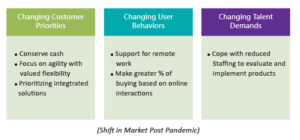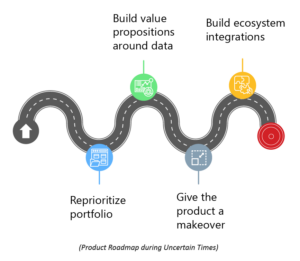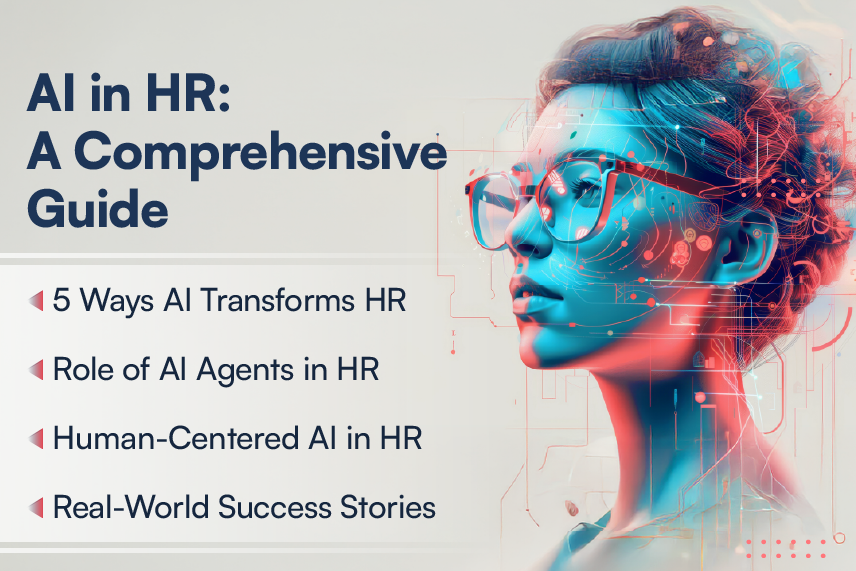
The pandemic of 2019 has changed it all. Be it work, workplace, or even manpower, things have altered for everyone across the globe. Although each function of the organization is battling the post-pandemic situation in its unique way, certain areas are bound to have a long-term stir. Talent management is one of them. As a result, reframing talent management strategies for a modern workforce has become critical for organizations.
This very relevant theme was at the center of discussion in the recent Virtual Collaboration hosted by Harbinger Systems in association with HR Tech Alliances, in which industry experts Shrikant Pattathil (President, Harbinger Systems), Chris Cella (VP Product Management, GR8 People), David Solot (Chief Science Officer & SVP of Product, Sciolytix), Raghav Singh (Director of Product Management, Salesforce), and Richard Mann (Chief Product Officer, Decisely) participated. While covering some of the highlights, this post brings you the link to the recording of the entire panel discussion.
The panelists opined that realigning product roadmaps to changing Talent Management needs is not as easy as it sounds. There are plenty of variables that need to be navigated. For example, changing compensation plans for different workers, leveraging analytics to guide better design of benefits programs, choosing between building features and facilitating seamless integrations, and so on. These are some ongoing situations that product managers and engineering heads have to contemplate on an ongoing basis. Is it possible to have some kind of a re-calibration strategy that would help with quick re-alignments as per market needs? That was the moot quest to which answers were being sought.
The discussion began by a deliberation on the need that drove the change, in the first place.
Shift in Focus
Following Covid, majority of businesses embraced remote working. This was the biggest factor that caused a lot of commotion both within and outside of organizations. The most significant impact was on the software creation and consumption processes. As a result of this, customers focused more on conserving cash, started making buying decisions based on online experiences, and a pressure was built to cater to varying talent demands. Businesses went to great lengths to secure their customer base, conserve cash and shift the focus to new markets.
Richard Mann shared his experience on how post-pandemic disruption turned Decisely’s attention towards cash conservation. Their large customer base of national brands and franchises helped them sail smoothly during Covid times.
When Chick-fil-A, one of the most well-known American fast-food chains, opted to go with drive-through rather than dine-in, Decisely helped them to meet their talent needs for the drive-throughs. As a result, Chick-fil-A saw nearly 20% year-over-year growth.
Suggested reading: How Accomplished Product Managers Lead in Uncertain Times
Salesforce was on the winning side when a majority of support came for a remote work environment. They developed Work.com to manage a remote workforce. The platform is a collection of tools aimed at assisting organizations and communities in reopening workplaces securely and productively. Salesforce is working continuously on this product to match the expectations of a hybrid workforce.

Sciolytix, on the other hand, turned their focus on improved employee learning. They developed UPtick, a practice Simulator for Salespeople. It allows salespeople to perform various sales practices in a simulated virtual environment.
These success stories reaffirm the importance of groundwork for recalibrating product roadmaps. When it comes to the recalibration revolution, everyone’s experience can differ, the panelists felt.
Recalibration Strategies Post Pandemic
Buyer dynamics, product design, and sales strategy became crucial considerations for the post covid market realignment. Here are some of the business strategies that companies have come up with to deal with such situations:
- Majority of businesses are in support of stakeholder collaboration in the buying process, to cope up with buyer dynamics.
- On-prem architectures are obsolete. While designing a product, businesses are concentrating on developing products that are compatible with cloud-based architectures.
- Sales today are not confined to closed doors. Businesses are embracing remote selling with open arms.
- It is the strategy that connects a feature roadmap to the challenges a business is solving for consumers and its core value proposition. In such situations a product roadmap is imperative.
The following diagram outlines what a post-pandemic product roadmap entails:

- Majority of product managers are now concentrating on the short-term aim of creating a revenue-generating product and establishing an integration ecosystem with Zoom, Slack, and Teams. Not only that, but integration with other systems is now a top priority for product managers.
- Besides, product managers are concentrating on the long-term goal of modernizing the user experience through product feature enhancement, agility and leveraging data to gain competitive advantage through data visualization.
Re-imagining a product roadmap to address modern world concerns is the need of the hour, and experts have confirmed this for you.
Check out this video to hear the whole discussion.






